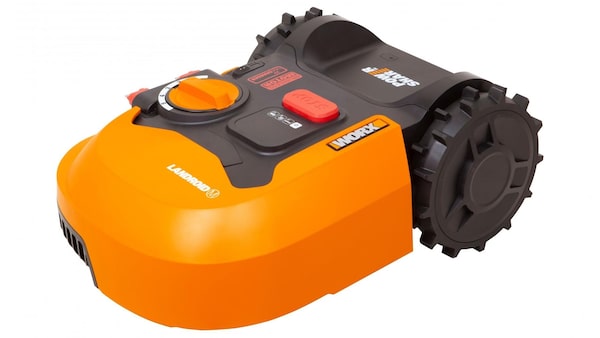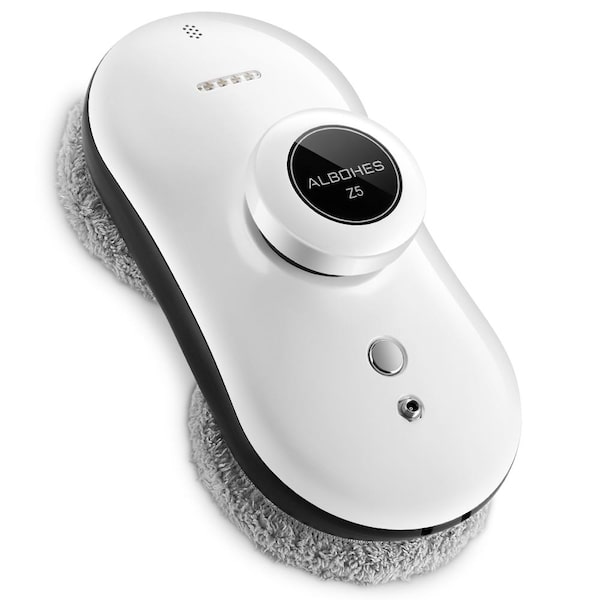
When robotic household helpers get to work, a human needs to bear the burden of supervising them.Besjunior/Getty Images/iStockphoto
Toronto’s Allison Bowsher isn’t worried that artificial intelligence will soon steal her job. She welcomes the help. Not for her paid work as an entertainment writer. It’s her unpaid, though no less demanding, other vocation as a mom, cook and housekeeper that she’s willing, even hoping, to outsource to automated technologies.
“My husband and I are happy for anything that simplifies our lives,” she says.
In the past few years, she’s started using Amazon’s voice-activated robo-assistant Alexa, which can make to-do lists and order groceries online, a sous vide – a set-and-go cooker that heats meat to a precise temperature and done-ness, no supervision required – and the Snoo, a $1,495 crib that rocks her newborn daughter gently to sleep while playing white noise in the background.
“I do most of the cooking,” she says, “but my husband loves gadgets so has used [sous vide] a lot… I recommend the Snoo. It’s expensive but helped our baby to sleep, which helped us sleep, which allowed us to enjoy our time awake more.”
Bowsher’s embrace of new technology is part of a booming home automation market. In the United States alone, sales of domestic robots – tools that do everything from cutting the lawn and cleaning the windows to entertaining the kids and cleaning up after the pets – are expected to almost triple from US$3.3-billion in 2019 to US$9.1-billion in 2024.
The automation could be helpful to time-crunched families (i.e. all families) who struggle to balance the competing demands of full-time jobs and school with maintaining an orderly home. The biggest beneficiary, however, could be women such as Bowsher. The reason is that women persistently take on more daily household chores than men – nearly 50 per cent more, according to the most recent census data from Statistics Canada. When combined with their actual paid work, women put in longer days than men, while working the types of jobs that often cause burnout – ones that are lower-paid and disproportionately part-time so they can continue doing more unpaid work at home. Offloading tedious tasks to robots, then, has the potential to redress society’s unfair gender divide.
Chloe Schama, a senior editor at Vogue magazine in New York, has experienced the time recouping benefits of home automation. She and her husband, Michael Pyle, a former economic aide in the Barack Obama administration, have three kids under the age of 6. Because Pyle often travels for his job, much of the domestic responsibilities fall on her to-do list.

Sales of domestic robots in the U.S. are expected to almost triple from US$3.3-billion in 2019 to US$9.1-billion in 2024.Besjunior/Getty Images/iStockphoto
“I don’t like to vacuum,” she says. She could have simply tried getting used to dirty floors. “But I don’t want people to think I’m a slob, either.” Instead, she tried a Deebot, a robot vacuum that she controls remotely with her smartphone. “I’m obsessed with how much dirt it picks up. It makes me feel like I have a second set of arms. It gives me the feeling that someone is helping me while I’m at work.”
But, in reviewing the Deebot and other domestic robots for a recent Vogue column called Will a Robot Rebalance My Life?, she noticed that the tech wasn’t a guaranteed liberator from housework. Partly, she discovered that having an abundance of chore-doing robots not only took up precious space in her tight New York apartment, but created a frustrating sense of perfectionism: If gadgets could make her home squeaky clean at all times, then she felt pressure to maintain that standard.
More importantly, despite the AI actually performing the tasks, she still felt responsible for their execution – a burden that her husband didn’t necessarily share. At the end of her column, she concludes that while the toys helped in certain areas, there is no robot to fix the underlying issue. She writes: “Maybe the means to a more equitable division of labour in my house is just to keep a tally of who does what and for how long, and hold ourselves accountable to our progressive vision of ourselves.”
Schama’s conclusions don’t surprise Kelly Bronson, a Canada Research Chair in science and society at the University of Ottawa. “I can imagine robots reducing the inequality, but I wouldn’t hold my breath that they will eliminate it,” she says. “Historically, domestic technologies have been proposed as the dominant solution to the problem of household work. Early advertisements for dishwashers promised that women would be liberated from chores, but that’s not what happened.”
That’s because, as Schama found out, when a technological advancement increases the efficiency of a task, it also often increases the expectation that the task will be performed at a high level all the time. And because domestic tasks have long cultural associations as women’s work, women are still typically stuck with the responsibility. Even if they aren’t doing the manual aspect of the chore, they still have to oversee the new technology.
“There’s a utopic idea that technology creates social change,” Bronson says. “But the social antecedents of the patriarchy are not that easy to fix.”

Women persistently take on more daily household chores than men – nearly 50 per cent more, according to the most recent census data from Statistics Canada.Besjunior/Getty Images/iStockphoto
Perception plays an important role as to whether men take on any extra housework. Troublingly, if inanely, the notion that something is feminine reduces their likelihood of involvement. A 2019 study from Penn State University found that men are less likely to recycle or carry a reusable shopping bag because they worry others will perceive the chore as emasculating.
But adopting new technology can be seen as masculine, even when it comes to housework. Multiple studies found that after the first commercial vacuum, the Roomba, was introduced in 2002, men became more interested in vacuuming simply so they could interact with the robot. The tendency could have broader implications for changing other domestic habits.
“Maybe more men would be interested in doing laundry if we could we gamify it,” says Aimee van Wynsberghe, a Canadian-born, Amsterdam-based professor and technology ethicist. “Husband and wife could compete to see who puts in more hours and did more tasks.”
Simply relying on the advent of new technology isn’t guaranteed to reshape perception, however. James Young, a computer science professor at the University of Winnipeg, points out that when microwaves were first introduced, they were marketed as a cool tech toy for single men who didn’t otherwise know how to prepare their dinners.
“It didn’t work,” says Young, noting that cooking was still highly associated with women. “Microwaves ended up being re-marketed for females.”
Despite being a technologist, he believes the ultimate solution lies outside of robotics. “It takes a lot of educating to get over their internal biases,” he says. “I have two little boys. Recently, I was helping one of them climb tree, teaching him to be confident and overcome a problem. A girl tried to jump in, too, but her parents stopped her, telling her she was going to get her dress dirty. That’s how these ideas get entrenched.” And no robot or AI has yet been created to re-program such deeply embedded ideas.
Go go gadget
Domestic robots are changing the way we live at home, making old drudgeries – laundry, lawn mowing, window washing – effortless. Here are six of the most revolutionary.

Handout
Montreal-based Smartduvet solves two critical sleeping problems. It has climate controls that can keep one half of the bed warm and the other half cool for couples with competing temperature preferences. More impressive: With a click of the button, the blanket makes itself, eliminating morning arguments over who should neaten the sheets. From US$299 through smartduvet.com.

According to cleaning guru Marie Kondo, a major step toward a happy home is having neatly folded clothes. But if you ask California-based startup FoldiMate, only suckers take the DIY approach: This proprietary robot folds a load of laundry (25 items) in five minutes. Price not yet available, through foldimate.com.

Trim lawns are nice to look at, less nice to maintain, especially when loud, gas-fuelled lawnmowers are involved. The electric, smartphone enabled, self-guided Worx Lawnmower cuts quarter acre lawns right to the edge, reducing the need for a secondary weed-wacker. From $999 through Worx.com.

Just about every parent knows the educational benefits of reading to their kids. Not every parent always knows how to find the time. The Luka, an AI reading robot, can narrate more than 50,000 tomes, guiding little ones along as they flip through the pages. Price not yet available, product available soon through luka.ling.ai.

For time-crunched cat lovers, the Litter-Robot self-sifts kitty excrement into an odour-neutralizing, carbon-lined drawer. When the drawer is full, the machine sends a text; likewise, if anything seems amiss with the quantity and frequency of what’s passing through the litter, an alert is sent in case it’s time to see a vet. $599 through litter-robot.com.

Smudgy windows are one of the most forgivable housekeeping lapses: Who wants to climb out onto a roof or up a ladder every time a pane of glass gets dirty? The Albohes Z5 is like a vertical Roomba – it climbs and cleans glass with suctioning buffer pads so you don’t have to. $230 through albohes.com.
Visit tgam.ca/newsletters to sign up for the weekly Style newsletter, your guide to fashion, design, entertaining, shopping and living well. And follow us on Instagram @globestyle.



